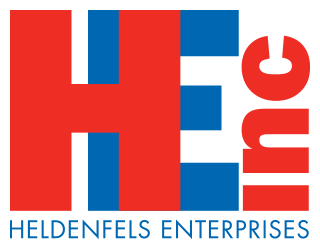Appendix
- Introduction
- Reason 1: Faster Installation
- Reason 2: Superior Strength and Durability
- Reason 3: Cost-Effective Solution
- Reason 4: Environmentally Friendly Practices
- Reason 5: Customization and Aesthetics
- Comparison Table: Precast vs. Traditional Retaining Walls
- Future Applications of Precast Concrete Retaining Walls
- Conclusion
Introduction
Retaining walls are a vital component of many construction projects, offering structural support and aesthetic appeal. Among the options available, precast concrete retaining walls stand out for their numerous advantages over traditional poured-in-place methods. This blog explores the top five reasons why precast concrete retaining walls are the superior choice for modern construction projects.
For premium-quality precast solutions, explore precast concrete slabs and other products from Heldenfels.
Reason 1: Faster Installation
Precast concrete retaining walls are manufactured off-site, allowing for quicker installation compared to traditional methods.
Advantages:
- Reduced on-site labor and equipment requirements
- Minimal disruption to surrounding areas
- Accelerated project timelines
Example: A commercial landscaping project reduced installation time by 40% using precast retaining walls, ensuring timely completion.
Reason 2: Superior Strength and Durability
Precast concrete retaining walls are engineered to withstand significant pressure and environmental stresses.
Features:
- Enhanced resistance to weathering and erosion
- Long lifespan with minimal maintenance
- Built to meet or exceed safety standards
Pro Tip: Heldenfels’ precast concrete pilings offer unmatched durability for challenging environments.
Reason 3: Cost-Effective Solution
Precast retaining walls provide substantial cost savings over their lifecycle, making them an economical choice.
Cost Benefits:
- Lower labor costs due to faster installation
- Reduced material waste during manufacturing
- Minimal maintenance requirements over time
Case Study: A municipal park saved 25% on its retaining wall budget by opting for precast solutions.
Reason 4: Environmentally Friendly Practices
Sustainability is increasingly important in construction, and precast concrete retaining walls align with eco-friendly goals.
Green Benefits:
- Use of recycled materials in manufacturing
- Energy-efficient production processes
- Reduced site waste during installation
Stat: According to research, precast concrete reduces carbon emissions by 20% compared to traditional methods.
Reason 5: Customization and Aesthetics
Precast concrete retaining walls offer a wide range of design options to meet aesthetic and functional needs.
Design Flexibility:
- Available in various textures, colors, and finishes
- Customizable shapes and sizes
- Seamless integration with surrounding landscapes
Example: A residential development enhanced its curb appeal by incorporating decorative precast retaining walls.
Comparison Table: Precast vs. Traditional Retaining Walls
| Feature | Precast Concrete Retaining Walls | Traditional Retaining Walls |
|---|---|---|
| Installation Time | Fast | Slow |
| Durability | High | Moderate |
| Customization | Extensive | Limited |
| Environmental Impact | Low | High |
| Cost Efficiency | High | Moderate |
Future Applications of Precast Concrete Retaining Walls
As construction demands evolve, precast concrete retaining walls will play an even more significant role in modern infrastructure projects. Here’s a glimpse into their future applications:
1. Urban Landscaping
With urbanization on the rise, precast retaining walls will be key in creating tiered gardens, noise barriers, and flood control structures in densely populated areas. Their customizable designs make them ideal for seamlessly blending into urban environments.
2. Climate-Resilient Infrastructure
Extreme weather events are becoming more common. Precast concrete retaining walls, designed to withstand high pressures and environmental stressors, will become a cornerstone of climate-resilient infrastructure, protecting against erosion and landslides.
3. Modular Construction Systems
The prefabricated nature of precast retaining walls makes them an essential component of modular construction. These walls can be integrated into modular systems for rapid deployment in emergency situations or temporary constructions.
4. Eco-Friendly Development
Sustainability trends will push manufacturers to innovate with greener production processes, such as carbon-neutral concrete and renewable materials, further reducing the environmental impact of precast retaining walls.
External Insight: According to the National Precast Concrete Association, advancements in precast technology are expected to cut construction times by an additional 15% over the next decade.
Conclusion
Precast concrete retaining walls are the clear winner for modern construction projects. Their faster installation, superior strength, cost efficiency, eco-friendliness, and design flexibility make them the preferred choice for architects and builders alike. As the demand for sustainable and efficient building solutions grows, precast retaining walls will continue to lead the way.
For reliable precast solutions tailored to your project’s needs, visit Heldenfels today.

